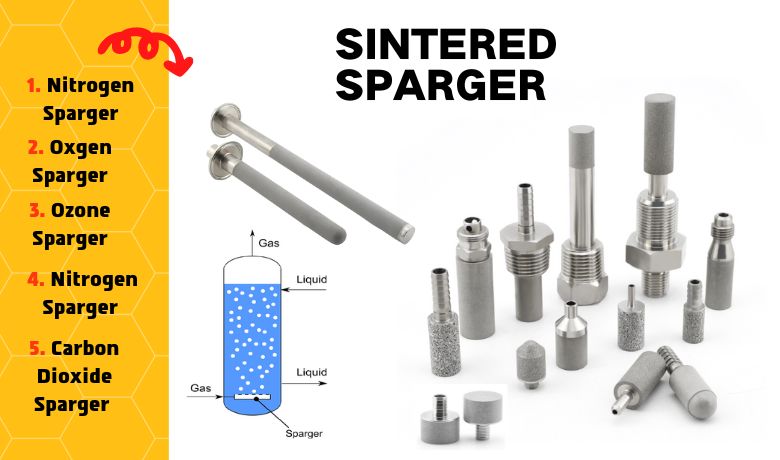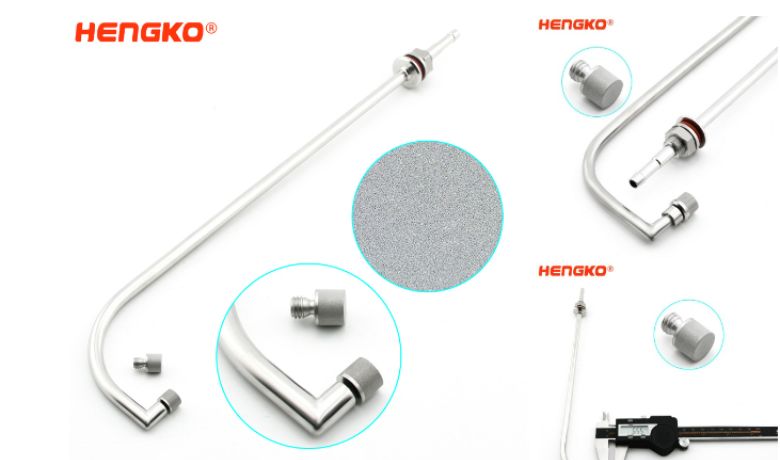-

Sintered Stainless Steel Sparger Porous Metal Diffuser for Gas Applications
OEM Sintered stainless steel diffuser / sparger, for aerating in liquid. HENGKO’s sintered sparger are unsurpassed in strength, precision and uniformity. Th...
View Detail -
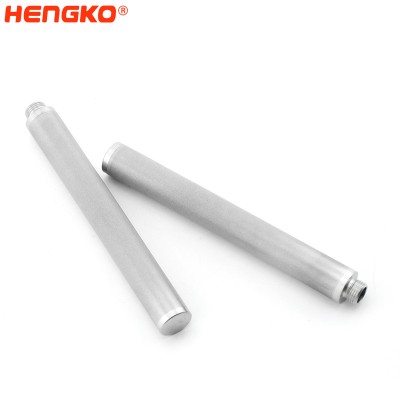
HENGKO OEM Sintered Steel Filter and Sparger
OEM Sintered stainless steel diffuser / sparger, for aerating in liquid. HENGKO’s sintered sparger are unsurpassed in strength, precision and uniformity. The...
View Detail -
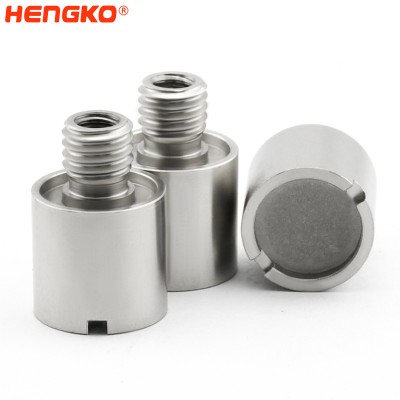
Sintered Microsparger in Bioreactor System for Green chemistry industry
The importance of aeration and gas dispersion to achieve good oxygen mass transfer cannot be understated. This is at the heart of the ability of mic...
View Detail -
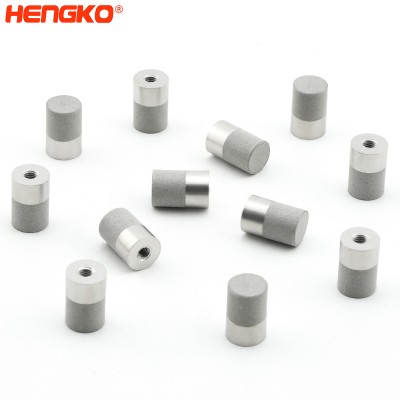
Sintered Micro Porous Sparger in Benchtop for Bioreactors and Laboratory Fermenter
Every bioreactor sparging system is designed for the introduction of oxygen to feed cell cultures. Meanwhile, the system must remove carbon dioxide to preven...
View Detail -
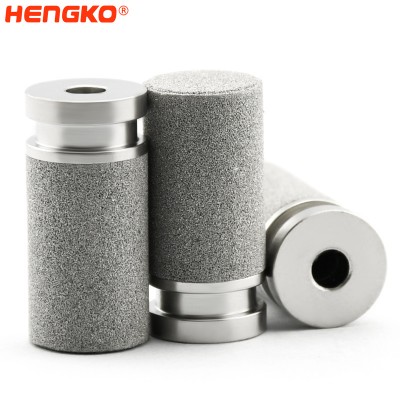
HENGKO sintered porous carbonation stone air sparger bubble diffuser nano oxygen genera...
In bioreactor systems, optimal mass transfer of gases like oxygen or carbon dioxide is difficult to accomplish. Oxygen, in particular, is poorly soluble in w...
View Detail -
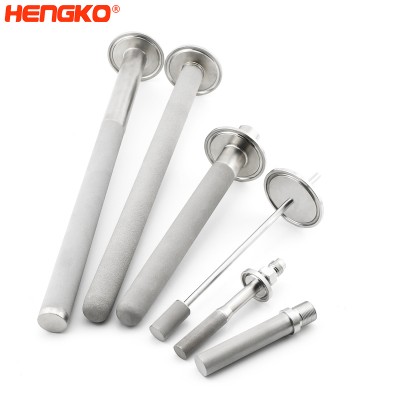
Sintered Sparger Tube with Porous Metal Stainless Steel Tank and In-line Spargers Used ...
Introducing the exceptional HENGKO sintered spargers, the ultimate solution to introducing gases into liquids. This innovative product utilizes thousands of...
View Detail -

Sintered Sparger Stainless Steel Material Quick Change for Bioreactor Systems
In bioreactor systems, optimal mass transfer of gases like oxygen or carbon dioxide is difficult to accomplish. Oxygen, in particular, is poorly soluble in w...
View Detail -
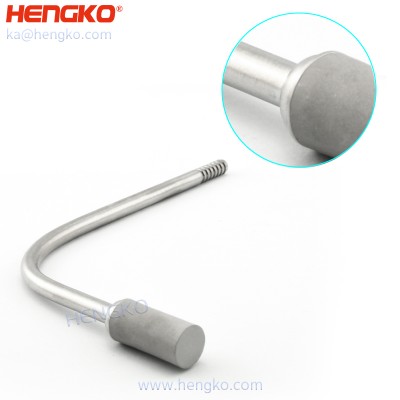
Aeration Stone 20um Sintered Stainless Steel 316L Micro sparger Diffusion Stone Supplier
Hydrogen water is clean, powerful, and with hydron. It helps to purify the blood and gets blood moving. It can prevent many kinds of diseases and improve peo...
View Detail -

hydrogenated water machine accessories fine bubbles stone
Hydrogen water is clean, powerful, and with hydron. It helps to purify the blood and gets blood moving. It can prevent many kinds of diseases and improve peo...
View Detail -
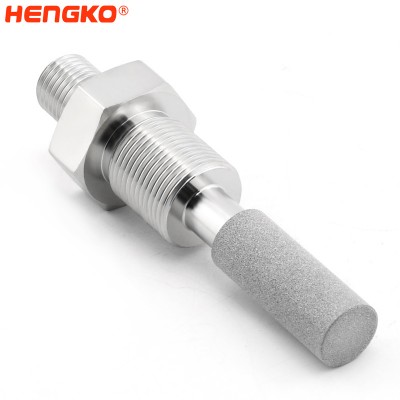
Sintered Stainless Steel 316L Carbonation Aeration Stone Used for Hydroponic Farming
HENGKO sintered spargers introduce gases into liquids through thousands of tiny pores, creating bubbles far smaller and more numerous than with drilled pipe ...
View Detail -
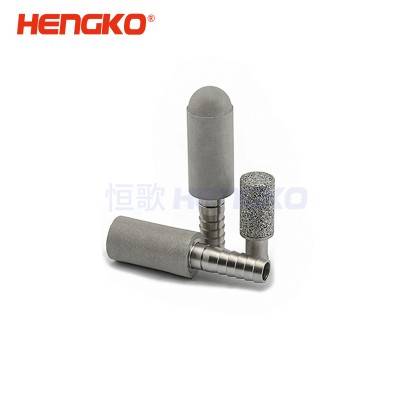
Sintered 316l stainless steel bubble hydrogen-rich water generator air sparger
Product Description Hydrogen water is clean, powerful, and with hydron. It helps to purify the blood and gets blood moving. It can prevent many kinds of di...
View Detail -

sintered sparger brewing carbonation wort aeration wands (Pure Oxygen) system for homeb...
HENGKO SS air stone is commonly used to aerate the wort before fermentation, which helps ensure a healthy start to the fermentation process. The HENGKO 2.0 m...
View Detail -
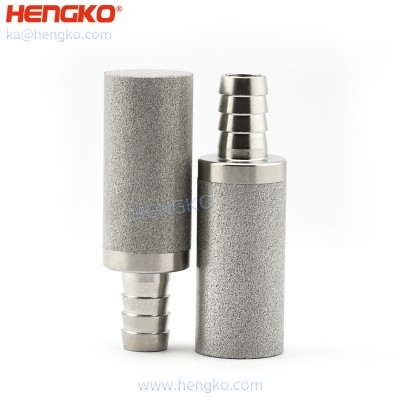
Sintered porous micron stainless steel spargers homebrew wine wort beer tools bar acces...
HENGKO sintered spargers introduce gases into liquids through thousands of tiny pores, creating bubbles far smaller and more numerous than with drilled pipe ...
View Detail -

Sintered stainless steel 316L micro air sparger and brewing diffuser carbonation ozone ...
Product Name Specification SFB01 D1/2''*H1-7/8'' 0.5um with 1/4'' Barb SFB02 D1/2''*H1-7/8'' 2um with 1/4'' Barb SFB03 D1/2''*H1-7/8'' 0.5u...
View Detail -
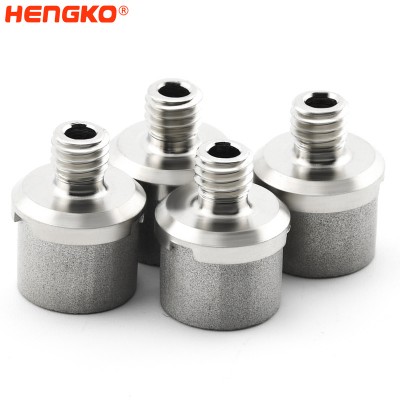
316L stainless steel porous sparger tube sintered tip for fermentation vessel accessories
Attaches to the tip of the sparger tube, this 316L stainless steel sintered tip is available in a variety of pore sizes. The 5 10 15 50 100 pore frit is the ...
View Detail -
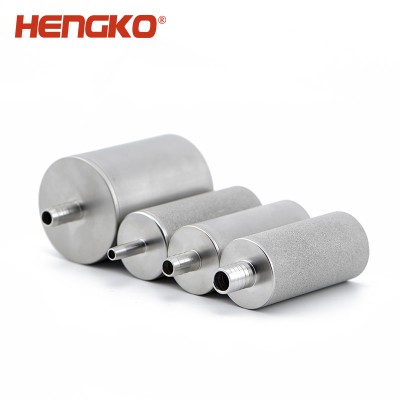
SFB02 2 microns sintered stainless steel micro porous air diffusers spargers used in me...
Product Name Specification SFB02 D1/2''*H1-7/8'' 2um with 1/4'' Barb HENGKO carbonation stone is made of the food grad...
View Detail -
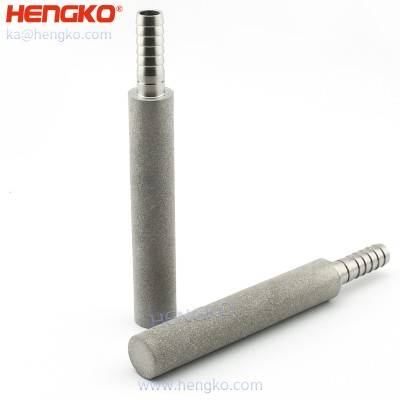
Nitrogenous wine Tool Diffusion Professional Effective Aeration Stone Beer Brewage 316L...
Product Name Specification SFB01 D1/2''*H1-7/8'' 0.5um with 1/4'' Barb SFB02 D1/2''*H1-7/8'' 2um with 1/4'' Barb SFB03 D1/2''*H1-7/8'' 0.5um...
View Detail -

Sintered stainless steel 316L micro air sparger and brewing carbonation ozone bubble st...
Sintered air stone diffusers are often used for porous gas injecting. They have different pore sizes(0.5um to 100um) allowing small bubbles to flow through t...
View Detail -

Sintered stainless steel 316L aeration carbonation stone air stone ozone air sparger 0....
HENGKO carbonation stone is made of the food grade best stainless steel material 316L, healthier, practical, durable, high temperature resistant, and anti-co...
View Detail -
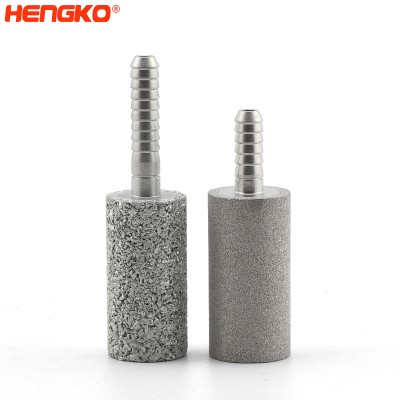
Sintered Medical Fine Diffuser Stone for Ozone Generator
HENGKO stainless steel ozone diffuser made of 316L stainless steel material has the advantage of durable, high temperature resistance, anti-pressure, and uni...
View Detail
Main Features of Sintered Sparger
1. Uniform Pore Size Distribution:
Sintered spargers have a uniform pore size distribution, which ensures a consistent flow of gas or liquid through the sparger.
This is important for maintaining a stable process and achieving consistent results.
2. High Porosity:
The high porosity of sintered spargers allows for a large surface area for gas or liquid to come into contact
with the material being processed. This results in efficient mass transfer and better process performance.
3. Corrosion Resistance:
Sintered spargers are made from materials that are highly resistant to corrosion, such as stainless steel or ceramics.
This makes them suitable for use in harsh chemical environments.
4. Temperature and Pressure Resistance:
Sintered spargers can withstand high temperatures and pressures, which makes them suitable for use in a wide range of industrial processes.
For the working principle of Gas Sparger by the Sintered Metal Sparger, you can check as follow video.
FAQ about Sintered Sparger
Q: What is a Sintered Sparger?
A: A sintered sparger is a device used in the process of gas-liquid mixing in industrial applications. It is typically made of a porous material, such as stainless steel, and is used to introduce gases into a liquid. The porous structure of the sparger allows for even distribution of the gas, resulting in efficient mixing.
Q: What are Some Common Applications of Sintered Spargers?
A: Sintered spargers are used in a wide range of industrial applications, including fermentation, wastewater treatment, and chemical processing. In fermentation, sintered spargers are used to introduce oxygen into the growth medium, promoting the growth of microorganisms such as yeast. In wastewater treatment, sintered spargers are used to introduce air into the water, promoting the growth of aerobic bacteria that break down organic matter. In chemical processing, sintered spargers are used to introduce gases such as hydrogen or nitrogen into a reaction vessel.
Q: What Are the Advantages of Using a Sintered Sparger?
A: Sintered spargers offer several advantages over other gas-liquid mixing methods. They provide efficient and uniform mixing of gases, resulting in more consistent product quality. They also allow for precise control of the gas flow rate, which is important in applications where the gas needs to be introduced at a specific rate. Additionally, sintered spargers are durable and can withstand harsh operating conditions.
Q: How do You Select the Right Sintered Sparger for a Given Application?
A: The selection of a sintered sparger depends on several factors, including the type of gas being introduced, the flow rate of the gas, and the properties of the liquid being mixed. The pore size and porosity of the sparger should also be considered, as these factors can affect the efficiency of gas-liquid mixing. It is important to consult with a supplier or manufacturer to ensure that the sparger selected is appropriate for the specific application.
Q: What are Some Common Materials Used in the Manufacture of Sintered Spargers?
A: Sintered spargers can be made from a variety of materials, including stainless steel, titanium, and ceramics. Stainless steel is a common choice due to its durability, corrosion resistance, and ability to withstand high temperatures and pressures. Titanium is used in applications where corrosion resistance is particularly important, such as in the production of pharmaceuticals or food products. Ceramic materials are used in applications where high purity is required, such as in the production of semiconductors or electronic components.
Q: How Can a Sintered Sparger be Cleaned and maintained?
A: Sintered sparger should be cleaned and maintained regularly to ensure optimal performance. The cleaning method will depend on the type of material used in the sparger, as well as the specific application. In general, sintered spargers can be cleaned using a combination of mechanical and chemical cleaning methods. It is important to follow the manufacturer's recommendations for cleaning and maintenance to avoid damage to the sparger or the equipment in which it is installed.
Q: What are some common challenges associated with sintered spargers?
A: One of the biggest challenges associated with sintered spargers is fouling, which occurs when the pores of the sparger become clogged with debris or other materials. Fouling can reduce the efficiency of gas-liquid mixing and can also lead to corrosion or damage to the sparger. Another challenge is the potential for damage to the sparger due to mechanical stress or thermal shock. It is important to consider these factors when selecting a sparger and to take appropriate measures to prevent or mitigate these issues.
Q: What is the difference between a sintered sparger and a bubble diffuser?
A: A sintered sparger and a bubble diffuser are both used in gas-liquid mixing applications, but they operate in different ways. A bubble diffuser produces bubbles of gas, which rise through the liquid and mix with it. A sintered sparger, on the other hand, distributes gas through a porous material, allowing for more uniform mixing. Sintered spargers are often preferred in applications where precise gas flow control and efficient mixing are required.
Q: What are some factors to consider when installing a sintered sparger?
A: When installing a sintered sparger, it is important to consider the flow rate and pressure of the gas being introduced, as well as the properties of the liquid being mixed. The sparger should be positioned in a way that promotes even distribution of the gas and prevents the formation of dead zones or areas of low flow. The sparger should also be installed in a way that allows for easy access for cleaning and maintenance.
Q: How can sintered spargers be customized for specific applications?
A: Sintered spargers can be customized in several ways to meet the specific needs of a given application. The pore size and porosity of the sparger can be tailored to optimize gas-liquid mixing efficiency. The shape and size of the sparger can also be customized to fit specific equipment or vessel geometries. Additionally, the material used in the manufacture of the sparger can be selected based on the specific properties required for the application, such as corrosion resistance or high temperature tolerance.
Q: What are some best practices for maintaining sintered spargers?
A: To maintain optimal performance of a sintered sparger, it is important to clean it regularly using appropriate mechanical and chemical methods. It is also important to inspect the sparger periodically for signs of damage or wear, such as cracks or deformations. In addition, it is important to monitor the flow rate and pressure of the gas being introduced to ensure that it is within the recommended range for the sparger. Finally, it is important to follow the manufacturer's recommendations for operation and maintenance to ensure long-term performance and durability.
Q: What are some common sizes and shapes of sintered spargers?
A: Sintered spargers are available in a wide range of sizes and shapes to fit specific equipment and vessel geometries. Common shapes include discs, tubes, and cones, and sizes can range from a few millimeters to several feet in diameter. The specific size and shape of the sparger will depend on the specific application and the properties of the liquid being mixed.
Q: What are some advantages of using a sintered sparger over other gas-liquid mixing methods?
A: Sintered spargers offer several advantages over other gas-liquid mixing methods. They provide efficient and uniform mixing of gases, resulting in more consistent product quality. They also allow for precise control of the gas flow rate, which is important in applications where the gas needs to be introduced at a specific rate. Additionally, sintered spargers are durable and can withstand harsh operating conditions.
Q: What is the maximum operating temperature for a sintered sparger?
A: The maximum operating temperature for a sintered sparger will depend on the specific material used in its manufacture. Stainless steel sintered spargers, for example, can typically withstand temperatures up to around 800 degrees Celsius. Ceramic spargers, on the other hand, can withstand temperatures up to 1600 degrees Celsius or higher. It is important to consult with the manufacturer to ensure that the sparger selected is appropriate for the specific operating conditions.
So if you have any questions and interested for the Sintered Sparger or like to OEM your design sintered
metal sparger, you are welcome to contact us by email ka@hengko.com , or you can feel free to send
inquiry as follow form, please, we will send the reply within 24-hour with the gas sparger solution for your device.
